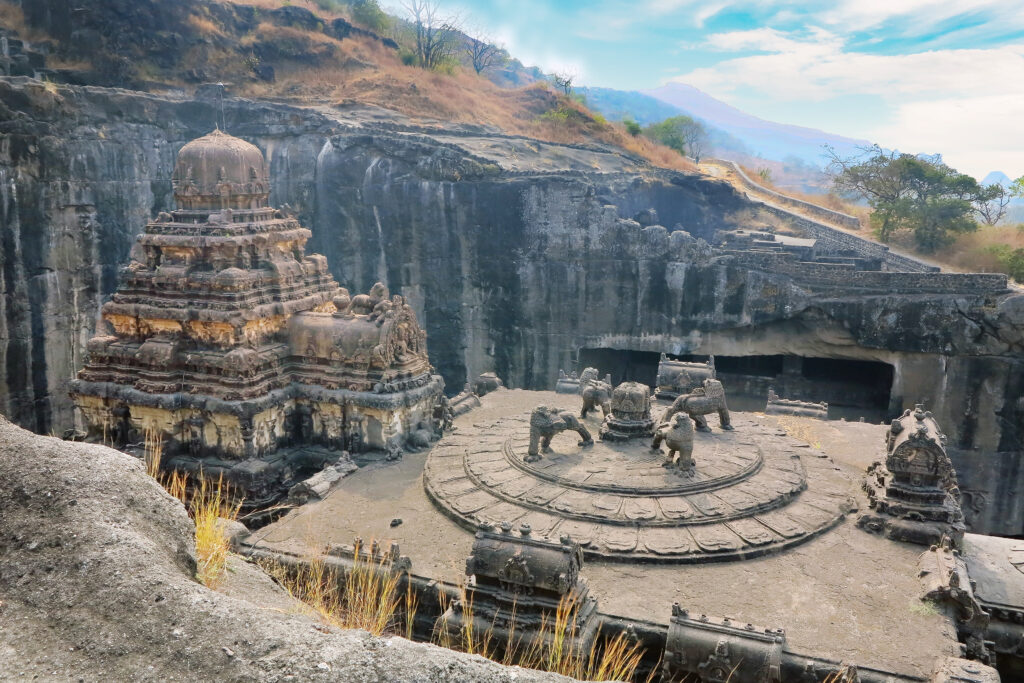The Eternal Splendor: Ellora Caves’ Path to World Heritage Status
Nestled in the heart of Maharashtra, India, the Ellora Caves stand as a testament to human ingenuity, artistic brilliance, and religious harmony. Carved into the Charanandri hills, these remarkable rock-cut structures have earned the esteemed recognition of being a UNESCO World Heritage Site. This article delves into the historical significance, the reasons behind their UNESCO designation, and the profound impact of the Ellora Caves becoming a World Heritage Site.

A Glimpse into History:
The Ellora Caves form an astonishing complex that spans over a millennium, from the 6th to the 10th century. This unique site houses a harmonious blend of Buddhist, Hindu, and Jain rock-cut temples, monasteries, and stupas, portraying the multi-faceted religious and artistic tapestry of ancient India.
Date of Designation:
The recognition of the Ellora Caves’ unparalleled historical and cultural significance led to their inscription as a UNESCO World Heritage Site on October 28, 1983. This designation solidified their status as a shared treasure of humanity.
Reasons Behind Selection:
The inclusion of the Ellora Caves on the list of World Heritage Sites is attributed to several compelling factors:
- Religious Harmony and Diversity: The Ellora Caves represent an exceptional convergence of three major religions – Buddhism, Hinduism, and Jainism – in close proximity. The coexistence of these faiths in one site highlights India’s rich tradition of religious pluralism.
- Architectural Excellence: The rock-cut architecture of the Ellora Caves is a testament to the mastery of ancient craftsmen. From the intricately carved sculptures to the awe-inspiring structural design, the caves showcase India’s architectural brilliance.
- Cultural Exchange: The caves’ artistic representations provide insights into the cultural exchanges that took place between different religious communities during the ancient period. The visual narratives tell stories of devotion, mythology, and history.
Impact of World Heritage Designation:
The UNESCO recognition of the Ellora Caves has left a lasting impact on various fronts:
- Conservation and Preservation: The World Heritage status has spurred efforts to conserve and safeguard the delicate rock-cut structures, ensuring their preservation for future generations to appreciate and learn from.
- Tourism and Economy: The UNESCO designation has led to increased tourism to the region, boosting local economies and creating opportunities for local communities. It has contributed to the growth of hospitality and tourism-related businesses.
- Cultural Appreciation: The global recognition of the Ellora Caves fosters cross-cultural appreciation and understanding. It serves as a bridge for sharing India’s diverse cultural heritage with the world.
- Educational Value: The UNESCO status has catalyzed educational initiatives, research projects, and awareness campaigns, facilitating a deeper understanding of India’s rich history, art, and spirituality.
The journey of the Ellora Caves from ancient sanctuaries to UNESCO World Heritage Site status underscores their timeless relevance. As we explore these magnificent rock-cut structures, let us recognize the responsibility to protect and cherish this legacy. The UNESCO recognition serves as a reminder that the Ellora Caves are not just architectural wonders; they are windows into a vibrant past that continues to inspire and educate us today.




